In the network shown the potential difference between A and B is (R=r1=r2=r3=1Ω,E1=3V,E2=2V,E3=1V)
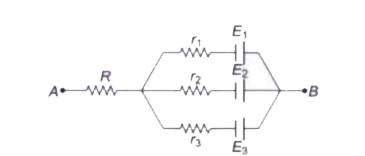
1 V
2 V
3 V
4 V
The correct Answer is:B
No current through R, so potential difference
across AB is V=E1r1+E2r2+E3r31r1+1r2+1r3=31+21+1111+11+11=2V
Topper's Solved these Questions
- SOURCES OF ELECTRIC CURRENTBOOK - CENGAGE PHYSICSCHAPTER - SOURCES OF ELECTRIC CURRENTEXERCISE - CHALLENGING EXERCISE
10 Videos
- REFRACTION OF LIGHT BOOK - CENGAGE PHYSICSCHAPTER - REFRACTION OF LIGHT EXERCISE - OLYMPIAD AND NSE LEVEL EXCERCISES
10 Videos
- STATIC ELECTRICITYBOOK - CENGAGE PHYSICSCHAPTER - STATIC ELECTRICITYEXERCISE - OLYMPIAD AND NTSE LEVEL EXERCISES
10 Videos
Similar Questions
In Fig. key K is closed at t=0. After a long time, the potential difference between A and B is zero, the value of R will be [r1=r2=1Ω,E1=3V and E2=7V, C=2μF, L=4mH, where r1 and r2 are the internal resistances of cells E1 and E2, respectively].

View SolutionIn the given network of ideal cells and resistors, R1=1.0Ω,R2=2.0Ω,E1=2V and E2=E3=4V. The potential difference between the point a and b is
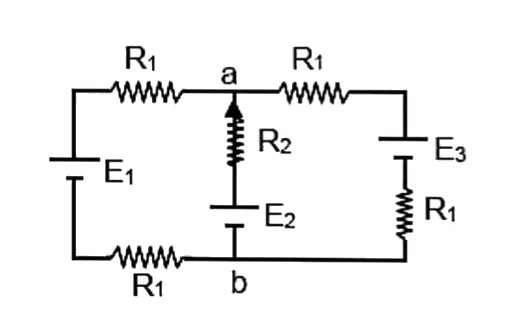
View Solution
Knowledge Check
In the network shown the potential difference between A and B is (R=r1=r2=r3=1Ω,E1=3V,E2=2V,E3=1V)
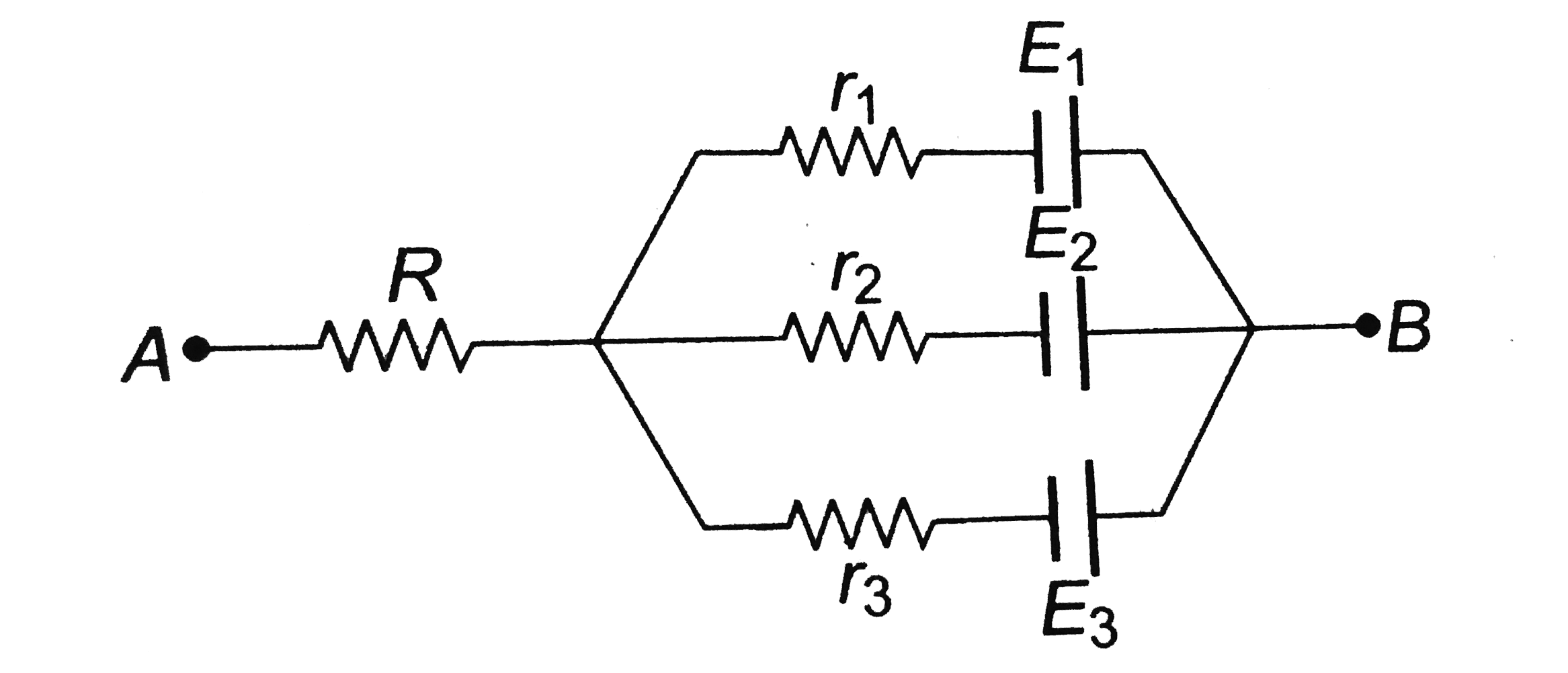 A1VB2VC3VD4V
A1VB2VC3VD4VIn Fig. key K is closed at t=0. After a long time, the potential difference between A and B is zero, the value of R will be [r1=r2=1Ω,E1=3V and E2=7V, C=2μF, L=4mH, where r1 and r2 are the internal resistances of cells E1 and E2, respectively].
 A43ΩB49ΩC23ΩD4Ω
A43ΩB49ΩC23ΩD4Ω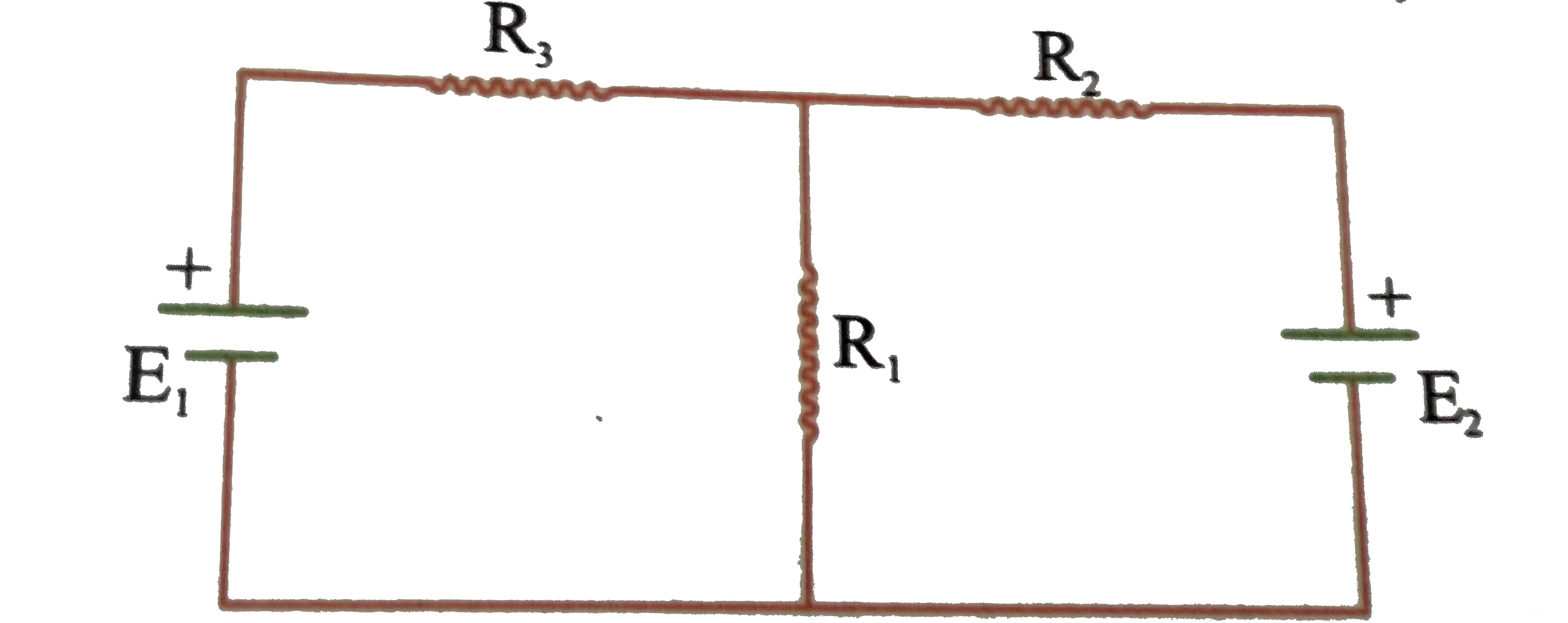
In the electrical network, shown in the diagram R1=5Ω,R2=2Ω,R3=3Ω and E1=2E2=10V, sources have negligible internal resistance. For this network,AThe power generated in R1 is 6.4J/sBif the sources of e.m.f. E1 and E2 were physically inter changed, without changing the polarities, the power generated in R1 will be the same.CIf the polarities of the sources E1 and E2 were both reversed,the power generated in R1 will be the same.DThe ratio of the power generated in R2 and R3 1:30
In the circuit shown in fig. E1=3 volt,E2=2 volt,E3=1 vole and R=r1=r2=r3=1ohm.
(i) Find potential difference in Volt between the points A and B with A & B unconnected.
(ii) If r2 is short circuited and the point A is coneted to point B through a zero resistance wire, find the current through R in ampere.

View SolutionFind a potentail difference φ1−φ2 between points 1 and 2 of the circuit shown in Fig if R11=10Ω,R2=20Ω,E1=5.0V, and E2=2.0V. The internal resisances of the current sources are negligible.

View SolutionIn the circuit shown in figure ,(ε)1=3V,(ε)2=2V,(ε)3=1Vandr1=r2=r3=1(Ω).Find the potential difference between the points A and B and the current through each branch.
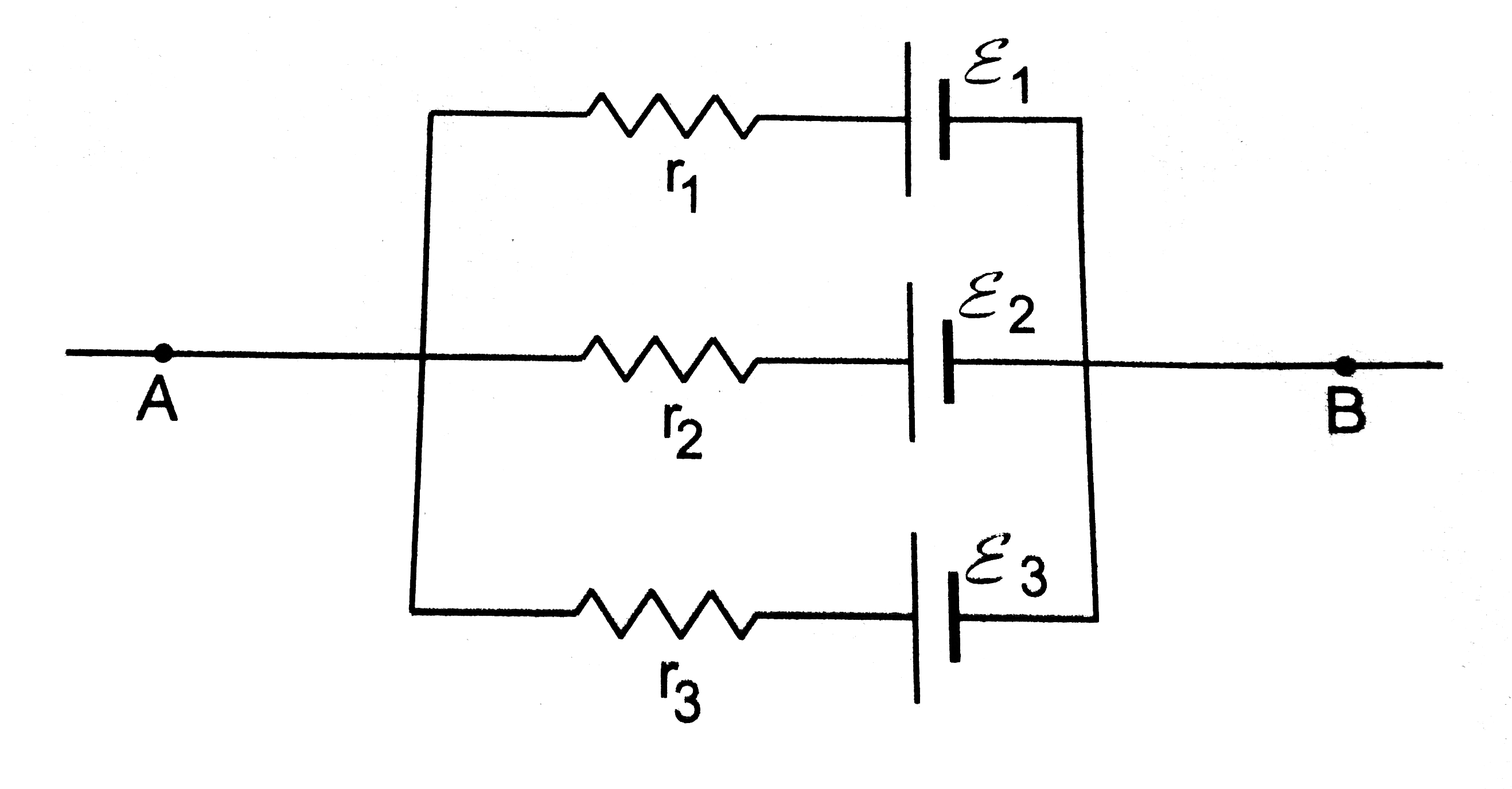
View SolutionIn the circuit shown in figure ,(ε)1=3V,(ε)2=2V,(ε)3=1Vandr1=r2=r3=1(Ω).Find the potential difference between the points A and B and the current through each branch.

View Solution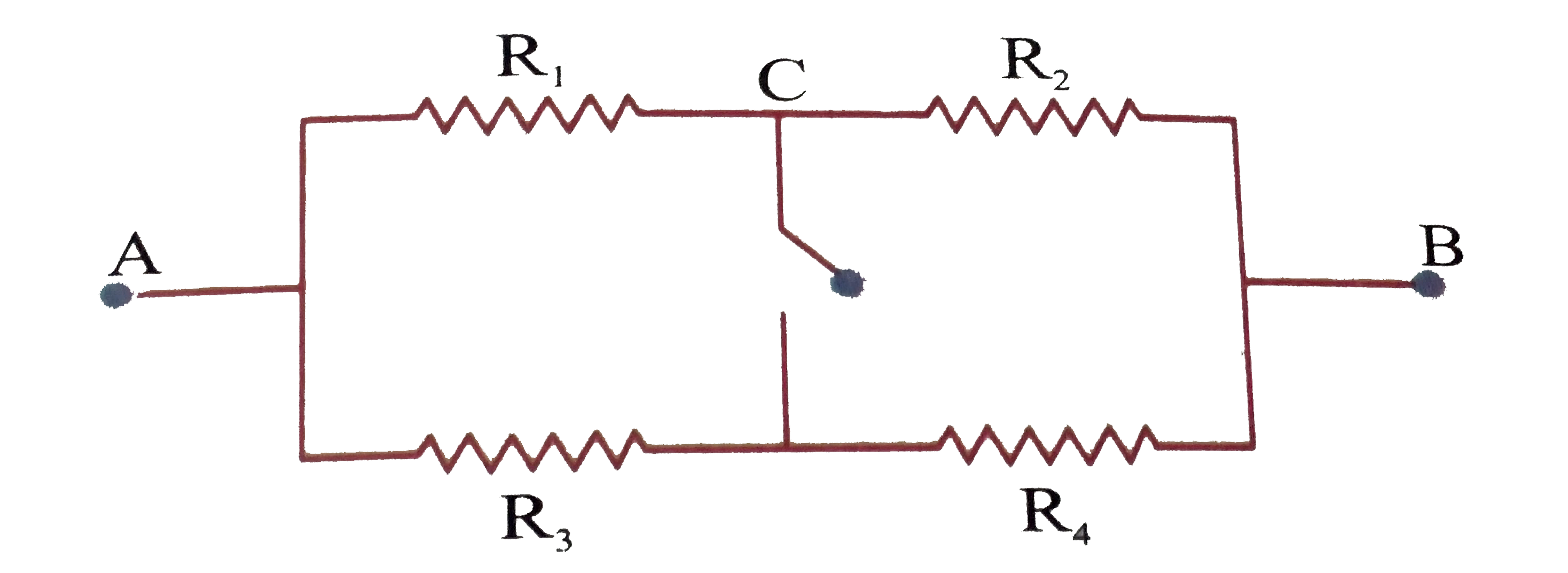
Four resistors R1,R2,R3 and R4 are connected between two terminals A and B iin a network as shown in the diagram. A key K can connect the two points (see diagram) C and D. A constant potential difference (VA−VB)=V is maintained between thhe points A and B
Q. If R1=R4=1Ω and R2=R3=2Ω, the effective resistance between the terminals A and B will change, on closing the key K, by
View Solution
